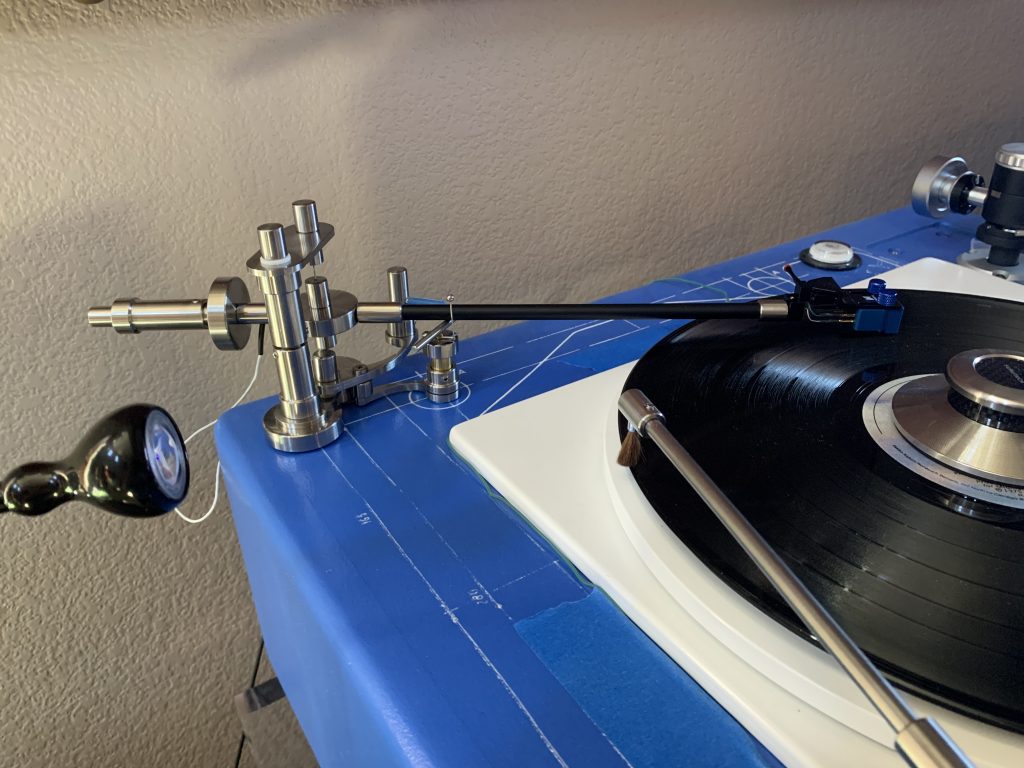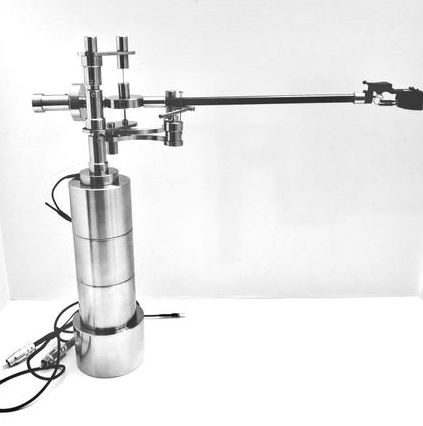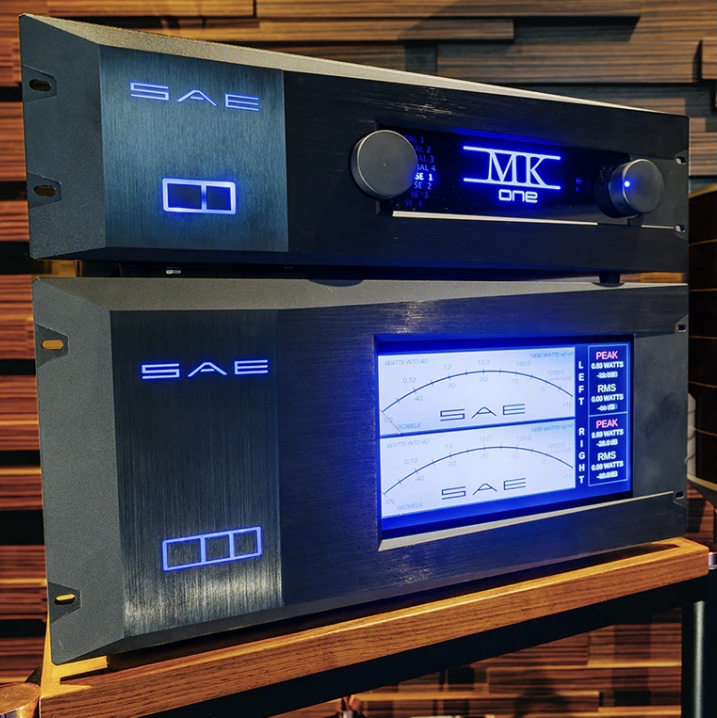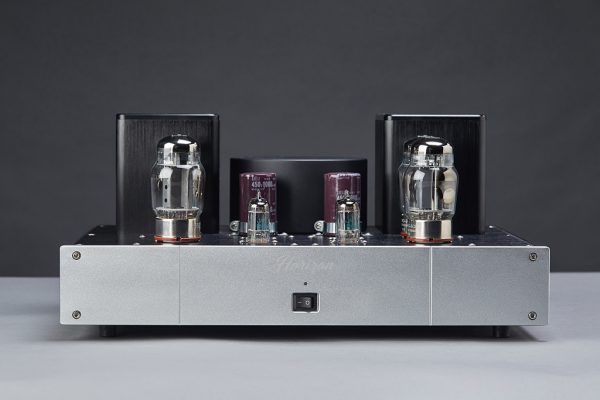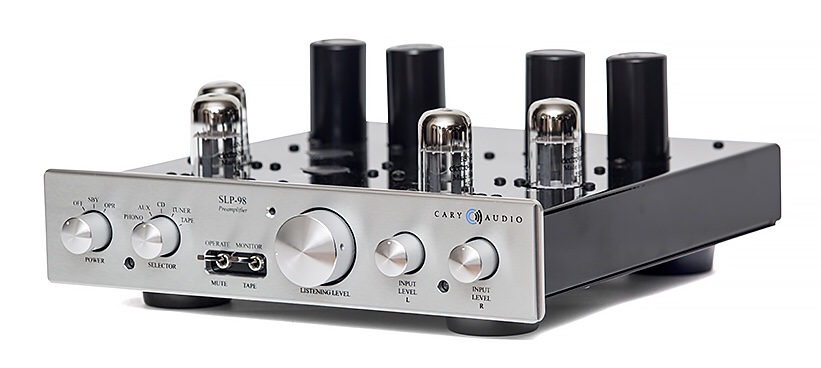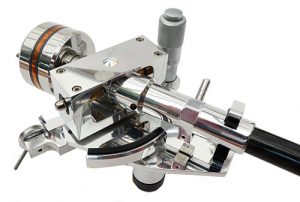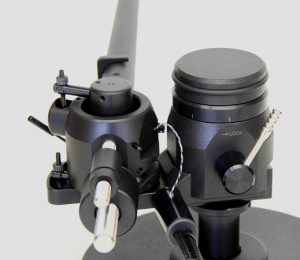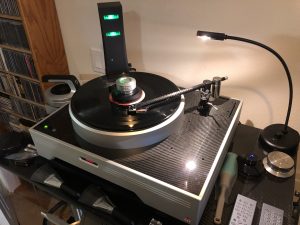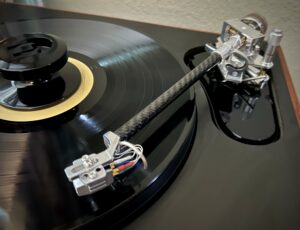I have been a audiophile for some 50 years now. In that time I have seen a lot of changes. Tubes gave way to solid state, only to see tubes come back around with a vengeance. Vinyl was considered extinct in the eyes of many the moment CDs hit the market, only to see the CDs all but replaced now by digital HiFi streaming and the absolute resurgence of vinyl. Doped paper drivers, aluminum cone, and Kevlar / carbon fiber drivers. Silk, ribbon planar, plasma tweeters, and back to paper. Single driver whizzer cones and diamond tweeters all have seen their day. Aside from those examples, things have been driven by refinements more so than radical and completely new designs. Evolution versus serious revolution. I have seen a ton of ideas and concepts come and go.
Granted, what I have said is quite a simplification of what has happened, but it would take endless issues to delve into every variation and nuance in gear changes and evolution during my 50 years of living in this hobby, and still wouldn't cover it all.
We have seen turntables go from relatively simple to extremely complex. Air bearing, magnetic levitating bearings, multiple platters stacked, counter rotating platters, acrylic versus aluminum platters, counter weighted pendulums, unobtanium and cantaffordium materials. Stainless steel bearings or ceramic bearings. Fixed headshell, removable headshells. Horizontal orientation versus vertical orientation. Now we see old turntable technology revamped and improved. Lenco 75s, Garrard 301s and 401s reconditioned and improved to run neck and neck with the latest and greatest (my Jean Nantais Lenco 75 is a great example) super complex tables (Kronos double platter table comes to mind, along with Clear Audio's statement turntable behemoth). There is no doubt that things have greatly improved in dramatic leaps and bounds, but still predominantly following the conventions of established designs by and large throughout my journey. Turntables still have one purpose though, and that has not changed—spin an LP at a precise, consistent, and dead on accurate speed while preventing noise from reaching the platter and thus the cartridge. There are infinite versions of how to execute this, and many, if not most, do a phenomenal job of execution.
The tonearm has seen its fair share of changes. S shaped arms, straight arms, 9 inch, 10 inch, 12 inch, and 16 inch lengths (I even have a picture of a turntable with what must be at least a 36" tonearm) have all had their supporters and detractors. Sweeping arms versus tangential tracking arms. Fully manual versus fully automatic tonearms have vied for dominance, and still have their loyal camps. When it comes down to it, the tonearm's primary function is to carry the cartridge as it tracks the grooves in the record. It has to damp vibration, move effortlessly across the LP, and maintain a rigid platform for the cartridge.
Thanks to the folks at IntegrityHiFi we have a rather revolutionary tonearm design notable for a plethora of innovations that set it apart as a totally new and exciting change in how we may look at tonearms going forward. It is my pleasure, and also an honor, to be the first to introduce the readers of Positive Feedback to the Tru-Glider Pendulum Tonearm!
The Tru-Glider on my JNT Lenco 75
I put a teaser regarding the Tru-Glider in my Trifecta review of the company's Tru-Lift, Tru-Kleen and Tru-Sweep products in my last review (HERE). Now I bring you the Tru-Glider in-depth!
What is the Tru-Glider Pendulum tonearm you might ask? Well, it is a new paradigm in tonearms. Imagine a tonearm that does not require you drill into your plinth, or have a special mounting plate, and can be relatively easy to move from one turntable to another with minimum fuss. Imagine that that the tonearm does not even have to sit on the turntable itself, but rather can be placed on your rack right next to the table. That in and of itself is rather novel. The innovation does not stop there. Now imagine that the same tonearm has no pivot. What? No pivot you say? How is that possible? Well simple! You do it by suspending the tonearm with a single piece of polyethylene mono-filament line. Say what? You heard me correctly. The arm touches no pivot, and only has a guide needle that keeps it from swinging wildly during use. The Tru-Glider is virtually weightless, and has zero friction in the arm mechanism. Zero, zip, zilch, nyet, nada! The only thing connecting the actual wand, counter weights, headshell, and cartridge to the mount is a short piece of filament. Add to that, the headshell happens to be a Nasotec Swingshell headshell, and you have a really unique piece of kit.
Highlights of the Tru-Glider arm from IntegrityHiFi:
- Pendulum floating stand alone tonearm
- Your choice of 9, 10, 11, 12, 14" & 14.5" black aluminum arm
- Aesthetics, Quality & Functionality
- No cables to buy
- No holes to drill
- No bearings
- No Unipivot
- No Azimuth
- No Antiskate
- No Friction
- No Setup Person needed
- No expensive Protractor to buy
- Zero Offset
- Versatile Cart Weights
- Nasotec Swingheadshell included ($360 retail)
- Special Tru-Lift included
- Terminated Direct Cardas wires ($600 retail)
- Weightless Tonearm
- Solid Stainless Steel Casing & Base included (approx. 8-14 pounds)
- Aluminum arm wand
- Easy to follow video instructions
- Live help on standby
- Transportable to another table
- Customized height
- Arm Tested for 4 hours - pre packing
- Made in Canada
- Not Mass Produced
- Compatible with all carts including low compliance
- Crystal Clear Sound Dynamics
Like all IntegrityHiFi products the unit is made primarily from stainless steel machined to very high tolerances. The fit and finish equal, if not surpass, their already well known finish work. Also, like their other products, the Tru-Glider can be highly customized to the customer's turntable. My turntable presented some challenges since the platter barely protrudes up off the plinth. That being said, Carlo not only crafted my example to fit the table, but also managed to add a Tru-Lift to it, which at first seemed to be impossible to do because of the need for it to slightly below the minimum height required. After some thought, Carlo tackled it and made it work, and boy does it work well. It is that distinct ability and willingness to adapt to the customers needs that truly sets them apart.
When the unit arrived it was in a gift box complete with silver ribbon. What a lovely touch. Upon opening the box you are greeted by all the components enclosed in individual and labeled plastic bags, and the instructions. There is also a link provided to very straight forward and concise set of instructional videos. I neatly laid out the parts in what I felt was a logical order, then fired up the videos and followed along. It required about two hours to get it unpacked, assembled, and dialed in. Once it was done it was a smooth sailing. I did not get to experience the really heavy bases, but imaging that they are exceptional in build quality and massive weight for sure at 8-14lbs.
I have to say one of the features that makes setup even easier is the inclusion of the removable Nasotec Headshell. This makes it so much easier to mount the cartridge than fixing it to a rigid headshell, in my opinion. Until the installation of Jelco tonearm on my table and the accompanying Nasotec, I had forgotten how nice it was to only work with the removable headshell. The ability to turn in over, connect the leads, and align all seemed simpler with the Nasotec. Congrats to IntegrityHiFi to design their arm around this fabulous headshell. It is standard gear when you buy the Tru-Glider. The headshell alone retails for $360! Add to this the fact that IntegrityHiFi supplies you with their own protractor specifically for the arm and you cannot make it much easier on a customer, sans showing up with the arm to set it up for you, and by design there is absolutely no need for that level of service.
Once the arm was up and running I tried it with four different cartridges: the Paradox Pulse R cartridge, the Jasmine Tiger, Koetsu Urushi Vermillion, and finally the new EAT Jo No8. Each to a degree has their own distinct construction, materials, and sound. Varying weights from the Tiger, which is porcelain, to the Urushi, which is wood. Different compliance issues, tracking force, etc.. The Tru-Glider handled them all with minimum setup and fuss, and all of them sounded absolutely gorgeous. What I immediately noticed with the Paradox Pulse R (which was the first cartridge I tried) was more air around the players, sharper imaging, and it delivered the music with more realism that I didn't even know was missing. It was actually startling. Every cartridge utilized was the same way. The Tru-Glider just seemed to either wrench out every last atom of sound, or simply allowed it to come through each cartridge. It was so startlingly improved that I was flabbergasted. I had my buddy Hiram Toro over and he listened for a good hour to a plethora of of tracks he picked. At the end of that he turned around and said, "This is as good as I have ever heard a system sound. Don't change a thing!" As the former US distributor of Koetsu, Chario, Goldnote, and a few others he has heard more than most. That was such high praise, and he has an exquisite custom made VPI table with a Koetsu Urushi Tsugaro cartridge. He is used to listening to the finest. That was an amazing confirmation of what I was hearing.
The combination of the virtual weightless tonearm and the Nasotec Swing Headshell makes tracking all but flawless. Running the combo through every test record I have the performance was better than any other combination I have run in all these years. Once setup properly there was nothing that seemed to ruffle it. Let us also not forget that there was no anti-skate or azimuth setup required.
Here is where I will mention the one negative thing that I found with the Tru-Glider. The arm rest does not have any mechanism for retaining the arm while at rest. With a metal top plinth plate very close to the headshell the cartridge magnets actually caused the arm to pull towards the the top plate. When I mentioned it to IntegrityHiFi they told me a small piece of shrink warp would do the job. I would not be at all surprised to see that become standard issue, as they are fabulous at responding to feedback. Since I have been recovering from knee micro fracture surgery I was somewhat immobile, so I ended up using a small strip of painters tape across the arm rest. The texture keeps it in place now, and didn't cost me a thing. Works like a charm. Not as elegant as the shrink tubing for sure, but every bit as effective.
Bass frequencies were exquisitely sharp and powerful. No muddiness or excessive bloom. Kick drums just slammed out of the soundstage. On the opposite side of the frequency spectrum, cymbals were bright, sizzling, and with the most realistic decay I have heard in my system. Snare drum hits could be like a gunshot. Just explosive, and on some tracks you could hear the sizzle of the actual snare wires. Never heard that before!
With vocals, the air and realism around the vocalist was immense, and brought them further into the room from the soundstage than ever before, no matter the cartridge. Yes the Urushi and the EAT cartridges sounded better than the other two, and the improvement with those was equally impressive, but what it brought out of the Paradox and the Tiger, made them both sound more like exotics than mid range cartridges.
There is no doubt that the Cardas tonearm cable didn't hurt the overall presentation. Just a reminder that this $600 cable is included with the tonearm as standard fare, just like the headshell at $360. Also included is a $299 Tru-Lift as part of the package. That makes the $1249 extras over a standard tonearm, an even more serious value added to the Tru-Glider experience.
On Willie Nelson's "Stardust" from the same album (Analogue Productions 2LP 45 Special Edition LAP 11645) the nylon string guitar was so clearly in the mix, and really stood front and center during the solo sections. The flesh on string sound is unique and easily distinguished by most guitar players, but only when the system is delivering every last scintilla of detail do you really feel and sense it in its fullest. I use this analogy frequently for two reasons. First I am a guitar player (bad but a player none the less) and secondly because it takes a truly great system to bring that out. I have heard other gear get this right on numerous occasions, but never to this degree. It was eye opening to say the least.
The exact same phenomenon happened with tracks from The Latin Sound of Lex VanDyke recording (Ultra Disc UDLP-8921.3) of "Concierto de Aranjuez," and the title track. All played on nylon string classical guitar, the sound was so distinctive and made the presentation more like an intimate live performance in my room than a recording. THAT is what we all are after. That personal and intimate live performance fee. This one aspect of what the Tru-Glider brought to the table makes it worth the entry price alone!
The Eddie Higgins Trio recording Its Magic Volume 1 featuring Scott Hamilton (Venus Records TK-JV-19180) brought Scott to within inches of me in the room. The sound was so palpable, and the clattering of the valves on his sax and his breathing were front and center. The realism of that was mind blowing. Far more intense and in my face than ever before. This is serious goose bump territory.
On the vocal side there is no better test track, in my opinion, than Eva Cassidy's rendition of "Over the Rainbow" from her Songbird LP (S&P Records SP-501). Eva's voice is so angelic and totally perfect. The emotion she felt always transferred to the listener in any presentation, but especially on this track. I have always said if the presentation didn't cause me to get tears in my eyes it wasn't correct. Suffice it to say through this fabulous combination of stainless steel, polyethylene line, and aluminum it brought me to my knees. Anyone who has caught an artist in a small venue will attest it is the best venue for capturing the emotion of a song and the singer. There is the intimacy of being close enough to feel the song and not just hear it. Her vocals came across so much more involved and intimate than at any other time. The air around her, and the very delicate and slight shifts in power, pitch, and touch just rocketed forward and just wrapped around me. These are the things that we audiophiles cherish, dream about, and chase endlessly in our pursuit of musical reproduction perfection. Often times never achieving it. It is this wow factor, this seemingly unobtainable end result that we are always trying to reach. With the Tru-Glider that ambition has been realized.
Simply put, this tonearm will change your view of what is possible in vinyl playback. There are always detractors for any new and unconventional piece of gear, and there will certainly be those detractors for the Tru-Glider Pendulum tonearm (have already heard from one), but I would caution naysayers to hold your opinions until you experience the tonearm for yourself.
It can be made to fit just about any application and any turntable. I have seen it on VPI tables, the Kronos table, Technics turntables, and most anything in between. I wish space allowed to show all the various configurations that they provide. If you buy this arm, they will ask for certain measurements on your table to provide just the right build for your table. If your table changes, thanks to the modular design of the base, you can easily move it to most any other application with relatively few modifications.
Another outstanding thing about Integrity is that if they come up with a mod they feel makes the product better they just send you the mod. Case in point—half way through the review Carlo decided that a heavier duty mono-filament would increase longevity and performance. One day the upgrade just arrived with a note saying please replace existing line and discard the other. They changed from a 30lb test line to a 150lb test. That is shark fishing level line! No great announcement. No additional charge, just a new and better component delivered, thank you very much. This is the kind of "after purchase" service that is almost impossible to find anymore. At IntegrityHiFi this is standard operating procedure!
If you are looking for a new tonearm for your table, perhaps a second tonearm to run another cartridge or a mono setup, if you are just looking to make a serious improvement to your vinyl rig, you seriously need to examine the IntegrityHiFi Tru-Glider Pendulum Tonearm. I can think of no better upgrade than this piece. It very well could be the last tonearm you ever buy, and remember it is highly portable and adaptable to any existing turntable. I would be hard pressed to come up with another tonearm that could outperform it. When you add in the standard features like the Cardas cable, the Nasotec Swingshell Headshell, and the infinite customization the cost is a downright steal in comparison to other options out there. True innovation, coupled with exceptional build quality and top of the line components is an intoxicating siren's song for sure, and not to be missed. Contact IntegrityHiFi with questions and concerns. They are some of the most down to earth and friendly people in the business, and only want to provide you with the best components that can be made. Go get you some!
Tru-Glider Pendulum Tonearm
Retail: Base Price $4000 US with standard base and tonearm length from 9" to 14". (Price increases depending on height needed)
IntegrityHiFi Canada
519.204.0195




